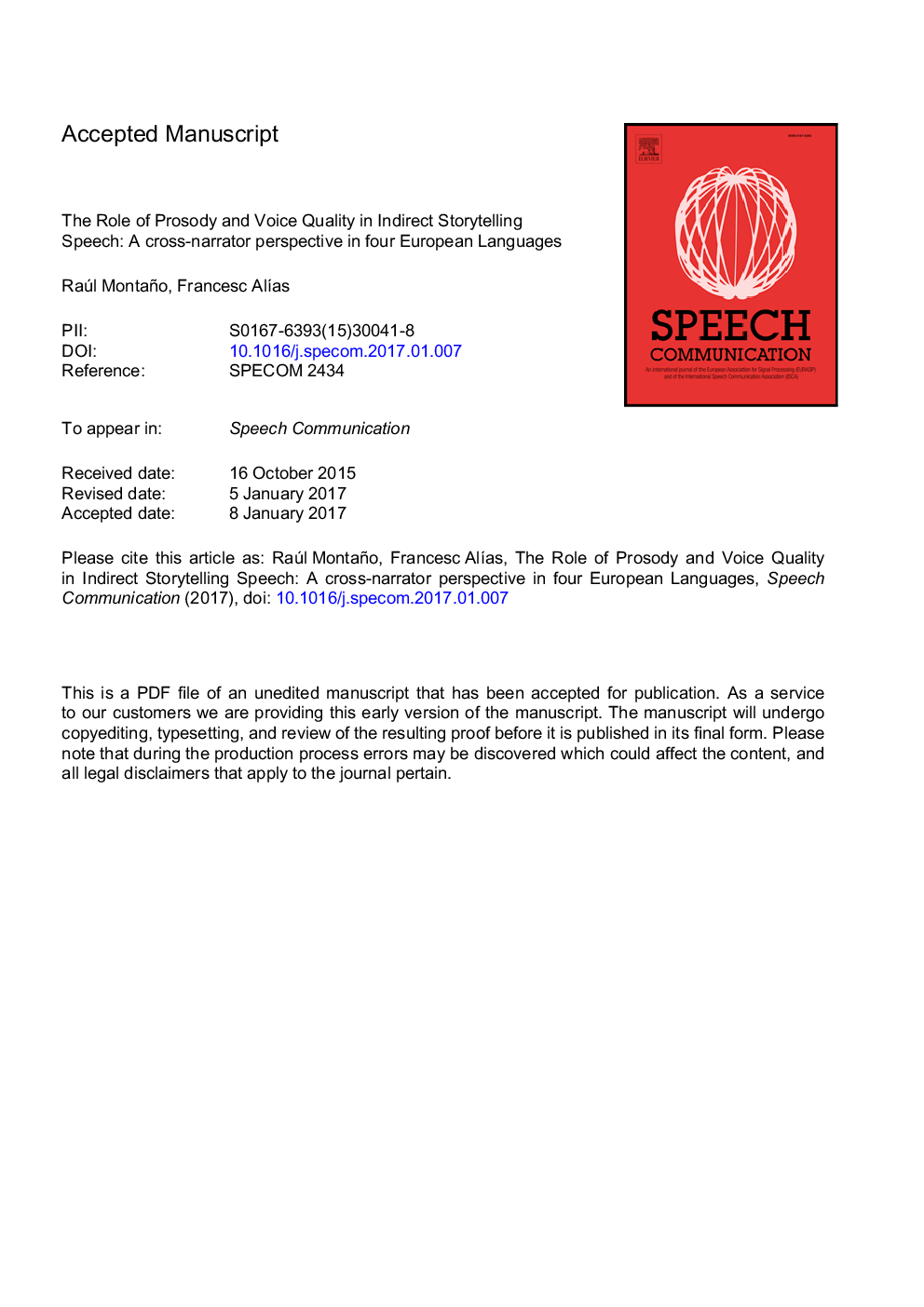| Article ID | Journal | Published Year | Pages | File Type |
|---|---|---|---|---|
| 4977844 | Speech Communication | 2017 | 36 Pages |
Abstract
During the last decades, the majority of works devoted on expressive speech acoustic analysis have focused on emotions, although there is a growing interest in other speaking styles such as storytelling. In this work, we analyze indirect storytelling speech extracted from audiobooks corpora. Specifically, we study to what extent the results obtained in a previous work centered on a Spanish narrator are generalizable to other narrators telling the same story in English, French, and German. We analyze the indirect speech of a story oriented to a young audience in terms of prosody and voice quality through statistical and discriminant analyses, after classifying the sentences of the story in several expressive categories: neutral, descriptive, post-character, suspense, negative/passive, negative/active, positive/passive, and positive/active. The results confirm the existence of the storytelling categories already observed in the tale's Spanish version across the considered narrators, besides establishing a set of acoustic parameters that are useful to discriminate them. Moreover, a strong relationship is observed in the selection of the expressive category per utterance across the narrators. The analyses also show that both prosody and voice quality contribute significantly to the discrimination among storytelling expressive categories, being conveyed with similar acoustic patterns across narrators in the considered four European languages.
Related Topics
Physical Sciences and Engineering
Computer Science
Signal Processing
Authors
Raúl Montaño, Francesc AlÃas,
